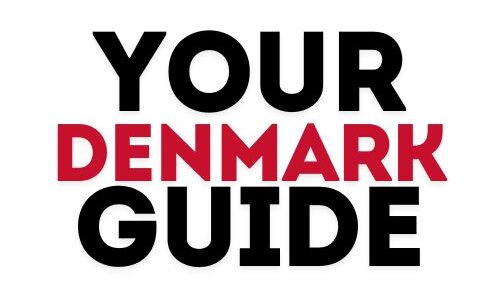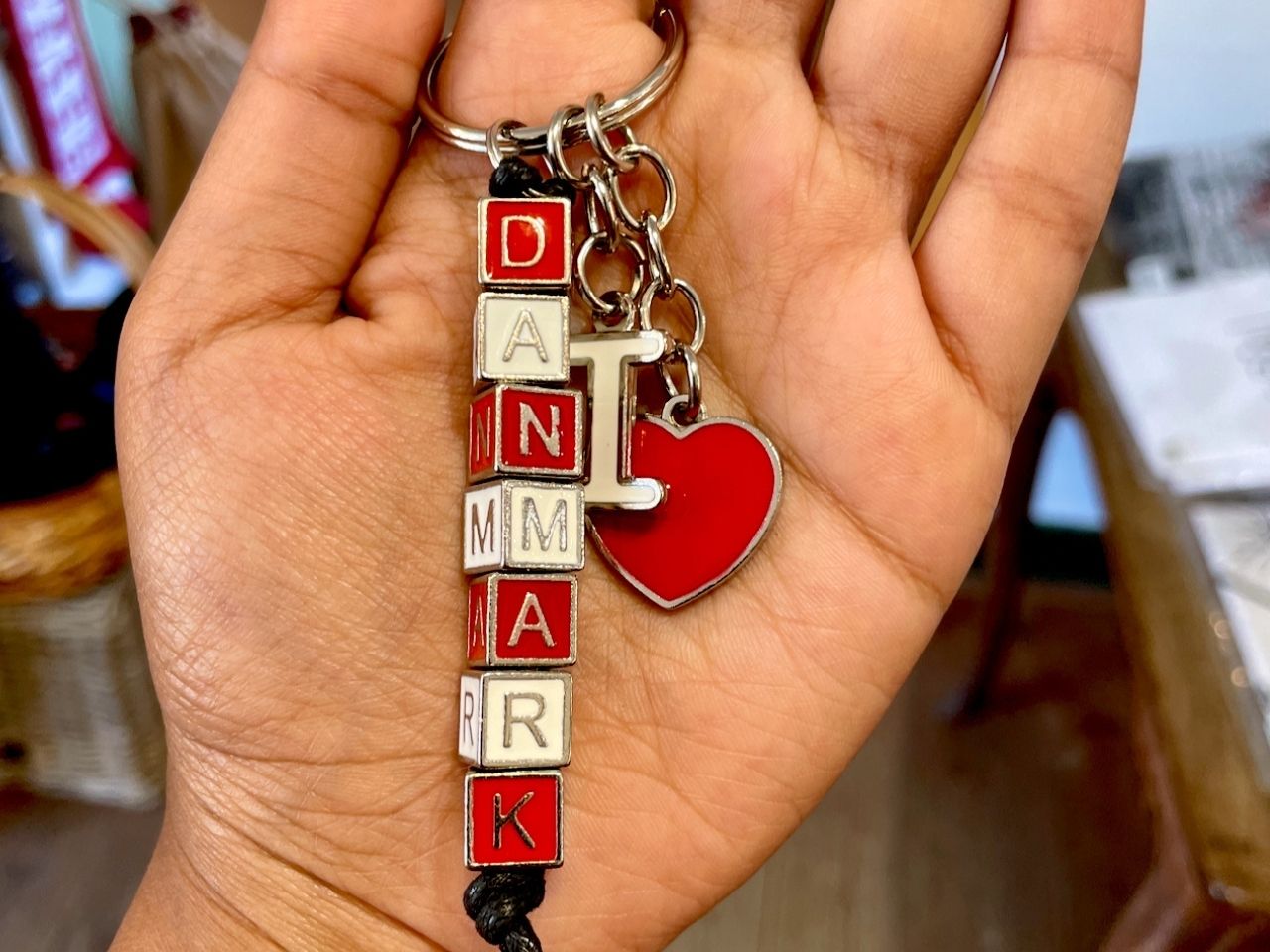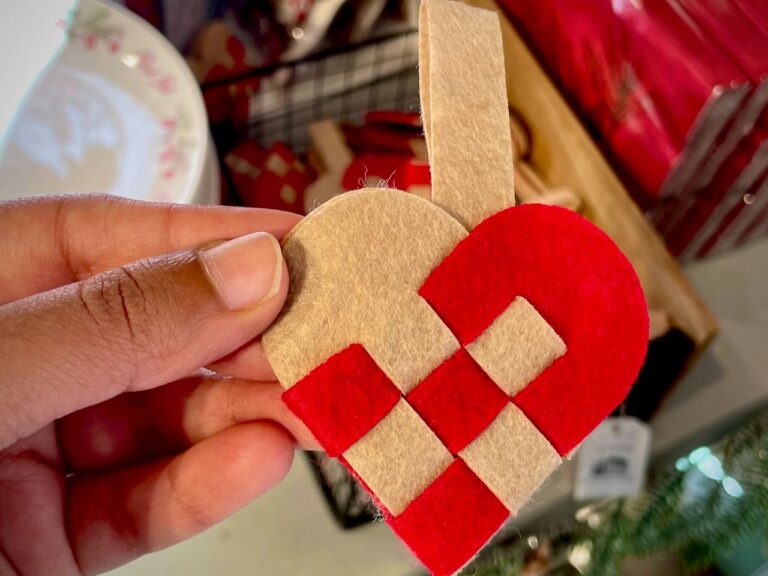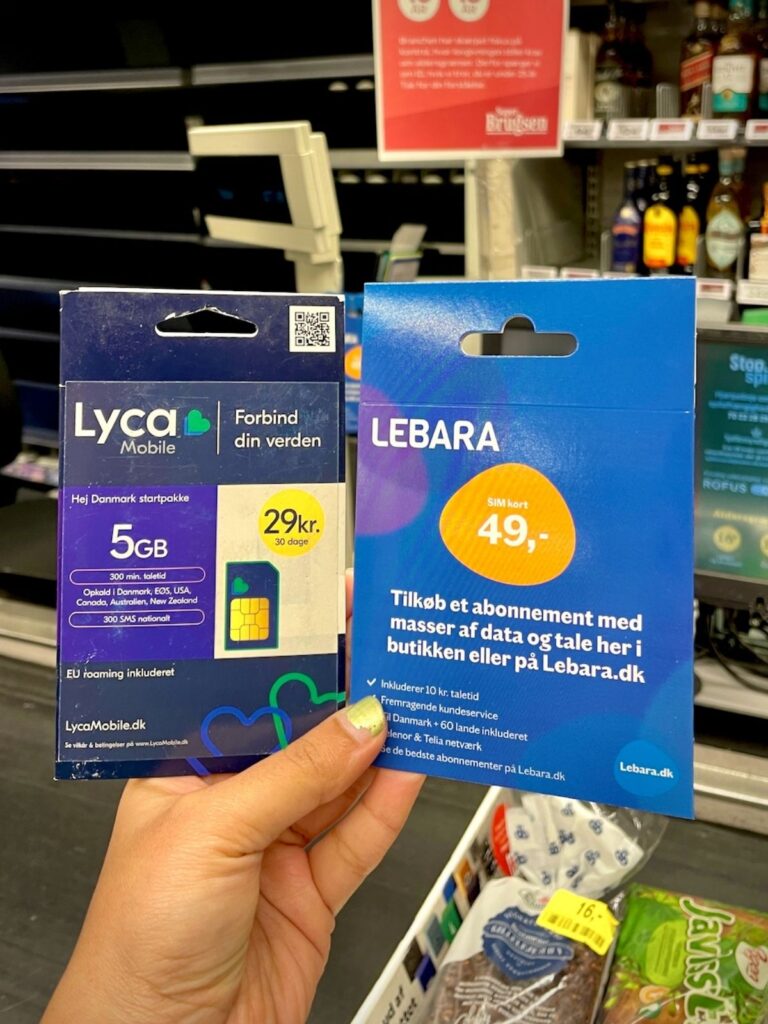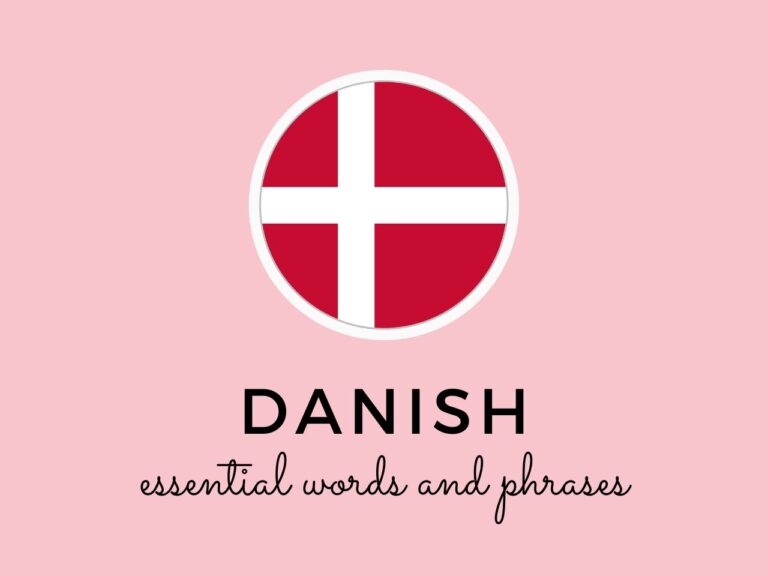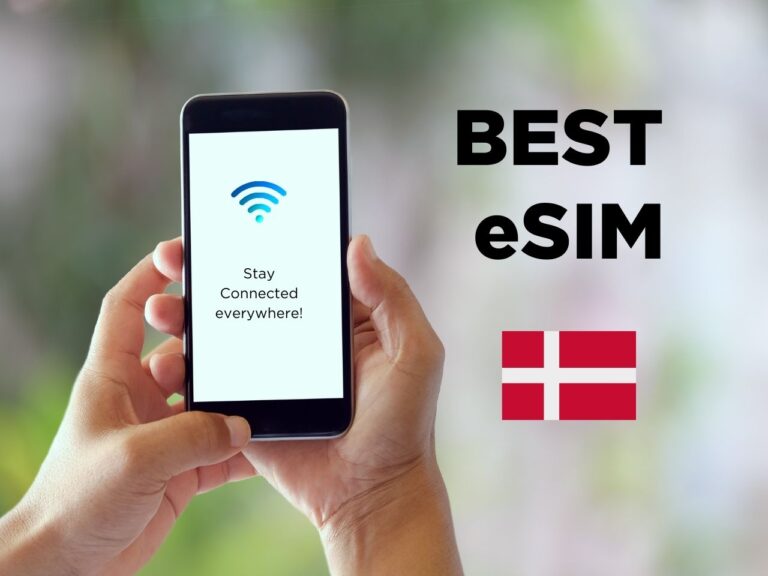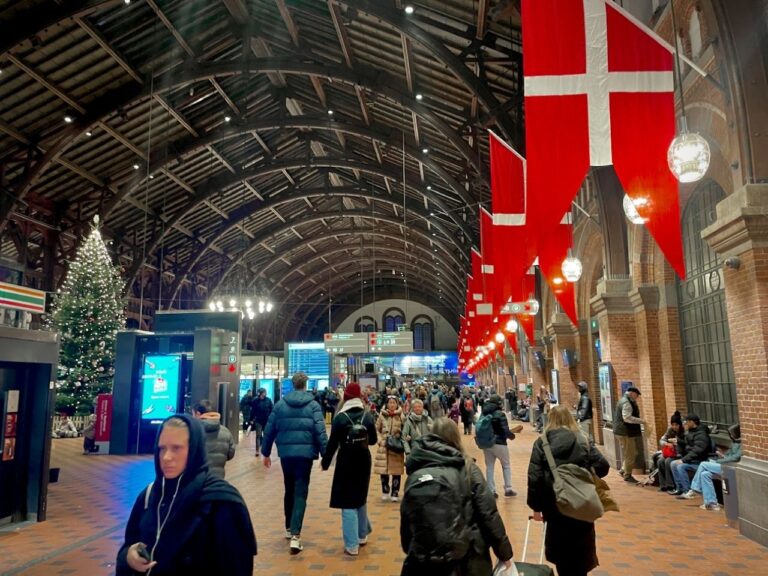37 Mind-Blowing Facts About Denmark That Will Amaze You

Curious to learn more about Denmark? You are in for a treat. Denmark is a treasure trove of unique stories and fun facts.
As someone who calls this Nordic country my home, I’ve come to appreciate the little-known gems and facts that make this country so special.
Denmark has so much to offer from its Viking heritage to its famous hygge lifestyle. Be ready – You might just fall in love with Denmark all over again!
The facts about Denmark given are personally verified by me and are linked to the relevant sources. None of these are made up.
Let’s dive into some interesting facts about Denmark that will give you a deeper appreciation for this beautiful country.
1. Greenland and Faroe Island is a Part of Denmark
The Kingdom of Denmark also includes two autonomous territories—Greenland and the Faroe Islands—collectively called “The Danish Realm”.
Despite Denmark being part of the EU, neither Greenland nor the Faroe Islands are members of the EU.
The Faroe Islands, home to over 53,000 people, feature coastal cliffs alive with seabirds, lush green valleys, and quaint villages. This remote gem between Iceland and Norway has become a hotspot for nature lovers and adventurers alike.
Greenland, the world’s largest island, is 80% covered by ice and has a population similar to that of the Faroe Islands.
2. Danes are the Second Happiest People in the World
Denmark ranked second in the World Happiness Report 2024, after Finland. Different metrics like GDP per capita, social support, life expectancy, freedom, generosity, and corruption are considered.
Speaking of life expectancy, women here live an average of 82.9 years, while men live about 79.5 years. That’s pretty impressive.

Life feels slower in Denmark and people seem genuinely satisfied. It’s like they’ve mastered the art of finding joy in the simple things.
Living here in Denmark made me appreciate the small things in life and value each moment.
3. Danes are Addicted to Coffee
Now, let’s talk about coffee, the other Danish obsession. Coffee culture here is a big part of the Hygge experience.
Danes ranks fourth among the top coffee consumers in the world, drinking an average of 4 cups daily—around 8.7 kg per person per year.
Most people in Denmark prefer their coffee black. Interestingly, only 17% of folks in Northern Jutland like milk in their coffee, while in Copenhagen, that number jumps to 54%.
A Danish friend even joked, “I like my coffee the way I like water.”
The Coffee Collective, a Copenhagen favorite since 2007, was celebrated internationally and named ‘Best Sustainable Café’ in 2022 by Sprudge.
I’m not much of a coffee person, but if you’re a coffee enthusiast—or just curious—Denmark’s coffee culture is definitely worth experiencing. You’ll find cafes everywhere, each offering the perfect spot to relax and enjoy the drink.
For tips on choosing the right milk or coffee while in Denmark, check out the Milk in Denmark guide!
4. Hygge is Famous in Denmark
Hygge (pronounced “hooge”) is a Danish concept of feeling cozy, comfortable, and content. There is no direct translation; it is a way of life.
From spending quality time together with friends and family during Christmas to getting lost in a good book and being with nature, hygge is everywhere in Denmark.

I’ve observed that contentment runs deep in Danish culture. Perhaps that’s why they emphasize creating a cozy atmosphere; it just comes naturally to them.
5. Denmark has the World’s Oldest Flag
The Danish flag, known as Dannebrog (which translates to “Danish cloth”), is a piece of history. It’s the oldest flag in the world, dating back to the 13th century A.D.
The design is simple—a red background with a white Nordic cross that symbolizes Christianity.
Dannebrog holds the Guinness record as the oldest continuously used national flag, officially adopted in 1625.

Danes are incredibly proud of their flag. You’ll see it everywhere—from the airport to Christmas tree decorations.
The Danish flag is also the best souvenir from Denmark. It’s a little piece of Danish heritage you can take home!
6. Punctuality is a Big Deal
Danes regard punctuality as a gesture of respect for other people’s time.
Whether it’s a work meeting, a casual dinner, or a get-together with friends, you’ll notice that everyone arrives on time. It’s a part of their culture.
Most Danes are organized and they plan months in advance. They use calendars for everything—meetings, social events, and even casual hangouts.
Arriving even 10 minutes late is viewed as inconsiderate. If you are running late, sending a quick text or making a call to inform them is essential.
7. The Danish Monarchy is the Oldest in the World
Denmark’s monarchy is the oldest in the world—over 1,000 years of uninterrupted history!
It all started with Gorm the Old, who ruled from 935 to 958 AD. Back then, it was an elective monarchy, changed to a hereditary monarchy in the 17th century. By 1849, Denmark had its first Constitution, transforming it into a constitutional monarchy, which remains today.
The Danish monarchy has seen some remarkable rulers, like Queen Margaret I in the late 1300s, one of the first female rulers in European history.
The current monarch, HM King Frederik X, succeeded his mother HRM Queen Margrethe II.

While the King is Denmark’s head of state, the prime minister leads the government. Denmark’s Parliament called the Folketing has 179 elected members including the representatives from Greenland and the Faroe Islands, two each.
The royal family spends their winters at Amalienborg Palace, right in the heart of Copenhagen. The guards changing ceremony takes place with the royal music band when they are in residence.
8. Danish People are Happy to Pay Taxes
Nowhere but in Denmark!
Denmark, despite being among the top 3 highest tax-paying countries in the world, Danes are happy to pay their taxes. Why? They see taxes as an investment for a better quality of life. They feel content about it.
With taxes ranging between 36% and 55%, Denmark also has a 25% VAT on most purchases.
The high taxes come with huge benefits for the taxpayers: free healthcare, free education, generous pension, and other public services.
The word skat (tax) in Danish also means “darling” or “sweetheart”.
9. Smallest Country in the Nordics
Denmark is the smallest country in Scandinavia and the Nordics (if we don’t count Greenland and the Faroe Islands), but it’s packed with people!
With a population of around 6 million, Denmark is actually more densely populated than Norway. In fact, over 1.3 million people live in the capital city of Copenhagen, which sits on the island of Zealand.
Denmark shares a land border with Germany. That’s the only part where Denmark is connected to mainland Europe.
10. Bikes are More Popular than Cars
In Denmark, cycling isn’t just a mode of transportation—it’s a way of life. Bikes (as they call them) are everywhere.
With over 12,000 kilometers of dedicated cycle lanes, Denmark has truly earned its reputation as one of the most bicycle-friendly countries in the world. They’ve even got a Cycling Embassy to prove it!

It’s incredible to see how deeply cycling is embedded in everyday life here. People of all ages hop on their bikes to commute to work or school, head to the beach, or restaurants and other places.
In Copenhagen alone, a person bikes 3 km on average every day, and there are five times more bikes than cars.
It’s free, a good exercise, environment friendly, and thanks to the well-planned infrastructure, it’s safe and convenient too.
Cycling is more than just a habit here—it’s part of the Danish DNA.
Did you know? Tour De France started in Copenhagen in 2022.
11. Home to Two Oldest Amusement Parks in the World
Bakken, the oldest operating amusement park in the world was established in 1583. It is just a 20-minute drive north of central Copenhagen.
Open only during the summer from April to October, it’s a fantastic place to enjoy the thrilling rides, games, restaurants, and ice cream stalls. What’s even better? Entry is free! You just pay for the rides you want.
Tivoli Gardens opened in 1843, the second oldest operating amusement park in the world is located centrally.

Tivoli takes festivities to the next level with stunning decorations for every occasion. Christmas at Tivoli is absolutely magical and something you don’t want to miss. Unlike Bakken, Tivoli has an entry fee, but the experience is worth every krone.
Both amusement parks offer rides and entertainment for all age groups, making them perfect for families, friends, or solo travelers looking to have some fun.
12. Danes are Avid Followers of Traditions
Danes are big on traditions, and some of them are pretty unique!
Take the Sankt Hans Festival, for example. Held on Midsummer’s Eve, it involves burning a witch on a bonfire—but don’t worry, it’s just a doll version of a witch now.
Another is Fastelavn, where kids take turns batting at a barrel to release candy inside. The barrels are decorated with black cat cutouts, but back in the day, people beat the barrel with a real cat inside until it breaks and releases the cat. This is believed to ward off evil.
One tradition I got to experience myself was the Mandelgave (almond gift) tradition on Christmas Eve when I was lucky to celebrate Christmas Eve with a Danish family. A whole almond is hidden in the Risalamande dessert, and whoever finds it gets an extra gift. It was a fun experience to watch everyone having their dessert cautiously.

These little customs really highlight how much Danes cherish their heritage.
13. You are Never Far Away from the Sea
With over 7,300 km of coastline, the country is surrounded by water, and no place is more than 32 miles (67 km) away from the sea.

The ocean has played a pivotal role in Danish life since the Viking days, and the long coastline dotted with lagoons, gulfs, and inlets means you’re just an hour away from the open sea no matter where you are.
Challenge yourself to find a place farther than that!
14. Gender Equality is Taken Seriously
In Denmark, gender equality is deeply ingrained in society, reflecting values like “Janteloven,” which essentially means “no one is better than the other.”
It promotes equality and discourages superiority, regardless of gender. This mindset is evident throughout Danish history, when Denmark appointed the world’s first female minister in 1924, Nina Bang.

Today, Denmark still holds one of the world’s highest female workforce participation rates, and even baby-changing stations are available in male toilets.
Denmark’s gender equality index is the second highest in the EU (77.8 100). The country even appointed a minister for gender equality in 1999, signaling its serious commitment to equality.
15. Denmark is the Land of Trolls
Did you know trolls actually originated in Denmark, not Norway? The famous Good Luck Troll with its signature fuzzy, up-combed hair was created by Thomas Dam back in the 1930s. It’s been a symbol of happiness ever since. If you’re a fan, you can visit the Troll Museum in North Jutland, which celebrates these little icons.
For a more immersive experience, head to Tisvildeleje’s Troll Forest in North Zealand. This magical place is filled with trees twisted into strange shapes, thanks to the wind and pine worm larvae. It’s been a protected area for over a century and feels like stepping into a fairytale.
Denmark is also home to Thomas Dambo’s wooden trolls, like the 6 Forgotten Giants and the 6 Copenhagen trolls. These massive, hidden sculptures across the country are a fun treasure hunt.

If you’re into gnomes and elves, check out Etly Klarborg’s shop in Gammelbo and Hune, where you’ll find beautifully crafted figures, popular across Scandinavia since 1986.
And don’t forget Bornholm’s very own troll, Krølle-Bølle, a local legend!
Trolls are common throughout Denmark! Stories, sculptures, and legends make them an integral part of the culture.
16. Denmark has a Lot of Michelin Star Restaurants
Denmark is a paradise for food lovers, especially if you’re into fine dining. Michelin stars are the ultimate badge of honor for chefs and restaurants, and Denmark has more of them than any other country in Scandinavia or even the Nordics!
In 2024, 31 Danish restaurants were awarded a total of 44 Michelin stars. That’s huge! Noma, Geranium, and Jordnær, each holds an incredible three Michelin stars. Even getting one star is a big deal—it’s enough to make you curious about their food.
These restaurants take fine dining to the next level.
If you’re visiting Denmark, why not treat yourself to a meal at one of these restaurants? It’s not just food—an experience you’ll cherish.
17. Denmark has No Mountains
Yes, you heard that right – Denmark is one of the flattest countries in the world.
The highest points, Yding Skovhøj and Ejer Bavnehøj are 172.54 m and 170.86 m above sea level respectively.
Despite the lack of mountains, Denmark is home to rich biodiversity with over 300 species of birds. The country also boasts five national parks, covering 1,466 square km.
So, even without towering peaks, Denmark still offers plenty of natural beauty and wildlife to explore.
18. Lego was Born in Denmark
LEGO comes from the Danish word, “leg godt” meaning “play well.”
It was invented by Dane Ole Kirk Kristiansen in Billund in 1949. Today, it’s one of the world’s leading play materials, enjoyed by people of all ages.
LEGO is committed to sustainability. Since 2018, they’ve been making bricks from kitchen worktops, even fishing nets, and bio-polyethylene derived from sugarcane. They’re also experimenting with recycled materials like PET plastic bottles.

Check out LEGOLAND, the first LEGO theme park, which opened in Billund in 1968.
There’s also the LEGO House, packed with 25 million LEGO bricks, where creativity knows no bounds. It’s fun for kids and adults alike!
19. Copenhagen Canals are So Clean You Can Swim
Over the past 25 years, Denmark has transformed the Copenhagen industrial harbor into a clean, recreational hub. Now, you can swim, kayak, row, or even try standup paddling in these clear waters of Copenhagen canals.
Danes love their active lifestyle, and their Viking spirit is alive and well—they even take ice-cold winter dips! During summer, the canals bustle with life.

The water quality is monitored daily, and there are 14 dedicated bathing zones, including 4 harbor baths. Copenhagen even topped CNN’s 2019 list of the best cities in the world for swimming.
Fun fact: The first public harbor bath opened at Islands Brygge in 2002, and it’s still a favorite spot today for many Danes including me.
Hop on a canal tour to see the city from the water, or try an electric boat for a more eco-friendly experience.
If you’re here during the Christmas season, don’t miss the magical Santa Lucia parade, featuring illuminated kayaks lighting up the Copenhagen canals.
20. Denmark Leads Scandinavia in LGBTQ Rights
Denmark is one of the most LGBTQ-friendly countries in Scandinavia and ranks among the top five in Europe. It’s known for its liberal approach, where people just don’t care who you’re in love with. The culture is open and accepting, and sexuality isn’t something that’s hidden or judged.
In 1989, it became the first country to legalize same-sex unions, and by 2012, same-sex marriage was fully legalized, giving equal rights to all couples.
Hate crimes and hate speech based on sexual orientation or gender identity are strictly prohibited, and Denmark is one of just six European countries with full protections for SOGIESC (Sexual Orientation, Gender Identity, and Sex Characteristics) under anti-discrimination laws.
Copenhagen Pride has been a major event in Denmark’s LGBTQ scene since 1996, and it’s now Scandinavia’s largest free pride event.


The LGBTQ community in Denmark is strong, and the country is proud of its inclusivity. Each year, hundreds of thousands of people come together to celebrate pride parade in August and February.
Coming from India, where most people are fashionably late, this cultural difference really stood out to me. But it’s one of those things that makes life in Denmark feel organized and respectful.
21. Denmark is a Dairy Country
Denmark’s love for dairy products, specifically butter and milk.
Danish dairy cows produce an astounding 5.69 billion kg of milk annually. That’s nearly 1,000 kg per inhabitant in the country!
With exports to over 150 countries, the dairy industry generates DKK 26.5 billion in revenue, accounting for 20% of all Danish agricultural exports.
Arla Foods, a cooperative owned by Danish and Swedish farmers, is the largest dairy group in Europe.
Milk is a common companion to meals, especially during lunch.
The statistics of dairy consumption credit to their impressive average heights – 181.6 cm (5.958 feet) for men and 168.7 cm (5.535 feet) for women.
And if you love yogurt as much as I do, Denmark offers some of the best you’ll ever taste!
22. Free Health Care and Education
In Denmark, all children under 16 years of age have free access to public schools. Higher education is free for EU/EEA exchange students, and students are eligible to receive a stipend every month to help with their living expenses.
Basic healthcare is also free. The welfare system ensures everyone is taken care of, making the high taxes more bearable. It’s a system where the benefits really do outweigh the costs.
I pay my taxes here in Denmark and have had treatments here for free.
23. No “Please” in Danish but Three Extra Letters
Danish is the official language of Denmark, and while it might look simple on paper, trust me—it’s a real challenge to learn.
Danish is a part of the North Germanic language family and uses the Latin script, introduced along with Christianity.
The alphabet includes the standard English letters plus three extra vowels: å (aa), æ (ae), and ø (oe). These letters add specific sounds to Danish, and they appear after “Z” in the alphabet.
The grammar? Not so difficult. But the pronunciation and spelling? That’s a different story. Not all letters are pronounced in a word and it’s one of the trickiest languages for English speakers to pick up.
And there’s no Danish word for “please”! I found this to be interesting when I first heard it.
Most Danes speak English well, so you can get by easily as a tourist. But since I live here, I decided to learn Danish and enrolled in a language school. I’ve made it through three levels so far—still a long way to go, but it’s been a fun (and humbling) experience!
Planning a trip to Denmark? Knowing a few basic Danish phrases can make your visit even more enjoyable!
24. Denmark is a Sustainability Pioneer
Copenhagen is often hailed as one of the world’s most sustainable cities. From electric buses and harbor ferries to cycling-friendly traffic systems, green thinking is part of daily life.
Denmark has been a global leader in green energy and environmental policies for decades.
Over 50% of the country’s electricity comes from wind and solar power, and they boast Scandinavia’s largest wind farm, Kriegers Flak, in the Baltic Sea.
Denmark introduced the world’s first Ministry of Environment back in 1971 and was also the first to implement eco-taxes on plastic bags.
In fact, Denmark ranks first globally in the Environmental Performance Index, a recognition of its strong commitment to sustainability.
Living in Denmark, I notice how sustainability is woven into everything, proving that caring for the planet can be practical and impactful.
25. Drinking in Denmark is Relaxed and Social
Danes and beer? It’s a perfect match.
From a casual drink at home to a Friday evening bar at the office (Fredagsbar), beer is deeply rooted in Denmark’s social culture.
What makes drinking unique here is the more relaxed and permissive attitude. You are allowed to drink in public. You’ll see signs on trains encouraging responsible drinking, not prohibition – “no begging, no playing music, no smoking, but drink… responsibly”
Even the legal drinking age reflects this — 16 for beer and wine, 18 for liquor. Denmark is home to popular beer brands like Carlsberg and Tuborg, as well as countless craft breweries.

Traditions like J Day show that the love for beer in Denmark isn’t just casual, it’s a full-on celebration.
While the locals enjoy their beer culture, they never pressure anyone to drink. If someone chooses not to, it’s simply respected. Even in moments when someone overindulges, there’s no judgment.
Drinking in Denmark is more about connection and enjoyment, making it a social and welcoming experience.
26. Babies Nap Outdoors in Denmark
One thing that blew my mind in Denmark is how parents leave their babies unattended outside in prams, while they step into shops, restaurants, or even cafes.
Yes, even in freezing weather! Of course, the babies are bundled up warmly, but it’s still fascinating. The idea is to build their immunity, get them used to the cold, and enjoy fresh air.
Another surprise? Kids play outside unsupervised. Unlike in India or the US, parents here trust their surroundings completely, and it’s very normal in Denmark.
27. Danish Pastries are not Danish after all
Did you know that what we call “Danish pastries” didn’t actually originate in Denmark? These treats were introduced to Denmark in the 1850s, thanks to Austrian bakers.
It all started when Danish bakers went on strike, and bakery owners brought in replacements from Vienna. These Austrian bakers introduced new techniques, like folding butter into dough to create those flaky, layered textures.

Later, Danish bakers adapted and mastered the techniques, infusing their tastes and preferences into the process. Over time, this evolved into the world-famous Danish pastries we enjoy today.
In Denmark, the pastries are called wienerbrød, which translates to “Vienna bread,” acknowledging their Austrian origin.
28. Making Danish Friends isn’t Easy
Danes are polite, friendly, and make excellent lunchtime companions at work. But breaking into their social circles as a foreigner? That’s another story—integrating takes a lot of time and effort.
Danes value personal boundaries and tend to reserve their closest bonds, for friends they made during school and college.
Don’t be surprised if no one strikes up a conversation on public transport or in supermarkets.
Small talk with strangers isn’t really a thing here, and as for eye contact, smiles typically follow yours. It’s not rudeness—it’s about respecting personal boundaries. Their behavior ensures they don’t invade your personal space while respecting your boundaries. Once you understand this, making real connections becomes much easier.
Once you break the ice, though, Danes are warm and welcoming. It is true. I was even once invited to a Dane’s home to celebrate Christmas.
29. Home to 400+ islands
Denmark may be a small country, but it’s packed with islands—lots of them!
The exact number is not clear, with estimates ranging from 450 to 550 islands while Politiken lists 398 named islands. Some are uninhabited, while others like Zealand (the largest), which is the home to the capital city, bustle with life.
Plus, don’t forget Greenland, which is technically part of Denmark and the world’s largest non-continental island.
If you’re into offbeat adventures, island hopping in Denmark is a cool way to explore the country’s hidden gems and picturesque landscapes.
30. Denmark Produces More Food than its Population Can Eat
About 61% of Denmark’s land is used for agriculture, with a focus on fruits and vegetables. This means they produce way more food than the 5.8 million people living here could ever eat. In fact, 75% of the food produced in Denmark is exported, including dairy products.
The food produced here is of premium quality. Even the street vendors serve great food. But, due to the 25% sales tax, expect the prices to be higher.

Denmark also holds the Guinness World Record for the highest organic produce per capita. With annual organic retail sales of around £220 million ($349.2 million).
Pork is the most popular meat here, followed by poultry, beef, and fish. No wonder there are more pigs than people (11.19 million pigs as of 2023)
If you’re visiting Denmark, make sure to try the local dishes like Smørrebrød, Æbleskiver (a Christmas treat), Snaps, Danish pastries, Frikadeller (meatballs), and Stegt flæsk (Fried pork belly, Denmark’s national dish).
31. Most Danes are Not Religious
Living in Denmark, you quickly realize that religion is not a part of everyday life.
Faith is deeply personal here, and you won’t catch Danes debating beliefs at the dinner table or in public. It’s not that religion is taboo—it’s just not a big deal.
Why? The answer lies in Denmark’s strong welfare state. With free healthcare, education, unemployment benefits, and robust safety nets, there’s less dependency on religion for emotional or economic support.
People don’t seek solace in faith when their lives already feel secure.
That being said, Denmark is officially a Christian country, with the Evangelical-Lutheran Church (Folkekirken) as its national church. The majority of Danes are official members but don’t confuse this with belief in god. For many, it’s more about tradition, identity, history, or cultural significance than religion.
However, Danes cherish traditions, especially Christmas.
In his book, Society Without God, social scientist Phil Zuckerman, highlights Denmark as possibly the least religious democracy in history.
32. Danes are Extremely Trusting
When I moved to Denmark, one of the first things that struck me was how much trust is woven into everyday life here.
Fresh eggs, fruits, vegetables, games, or clothes are placed outside the house for sale—with nothing but a QR code or a money box for payment. And some leave furniture outside to donate to others in need, instead of tossing it away which fascinated me. Experiencing this trust firsthand made me love and respect this country even more.

Babies are left sleeping in strollers outside cafes and shops, completely unattended. It’s a reflection of the trust they have in their communities.
It’s no surprise that Denmark consistently ranks as the least corrupt country in the world, with a near-perfect score of 90/100 in Transparency International’s Corruption Perceptions Index.
33. The Term Bluetooth is Named After a Danish King
Did you know the term “Bluetooth” owes its name to a Danish king? Back in the late 10th century, Danish King Harald Bluetooth was known for uniting warring tribes into a single kingdom.
Fast forward to 1997, the developers of the Bluetooth wireless technology took inspiration from this historic unifier.
Their idea? Bluetooth would connect and unite different devices, just as Harald brought people together. Even the Bluetooth logo combines the Nordic letters for his initials, H and B. Pretty cool, right?
34. Denmark is a Progressive Nation
Denmark is a developed country with high living standards. It is the founding member of NATO, Nordic Council, OECD, OSCE, and the United Nations, but opted out from using Euro.
It was also the first country to legalize pornography in 1969. This reflects the Danes’ open-minded approach and their healthy, liberal attitude towards topics that are often taboo elsewhere.
Denmark also made history in 1989 by becoming the first country to legalize same-sex unions.
Education? Denmark takes it very seriously, spending over 8% of its GDP on it—the highest in the world according to the Guinness World Records. It’s no wonder the Danes are among the happiest and most educated people globally.
And let’s not forget their dedication to sustainability. Whether it’s their innovative green policies or wind turbines that dot the landscape, Denmark’s commitment to a better future is inspirational.
Living here, you can’t help but admire how they prioritize progressive values in every aspect of life.
35. Handball was Born in Denmark
Yes, Handball was found in 1898 by two Danish schoolteachers, R.N. Ernst and Holger Nielsen. What started as a schoolyard game quickly became one of the country’s most celebrated sports.
Today, Denmark is a powerhouse in handball, with their national teams dominating worldwide. In the 2020 Tokyo Olympics, Denmark’s men’s team scored a record-breaking 47 goals in a match against Japan.
Fast forward to 2024, both the men’s and women’s teams made their nation proud by winning the gold and bronze respectively at the Paris Olympics.
While football may officially be the national sport, handball is where Danes truly shine.
36. Tallest Underwater Waterfall is in Denmark
The world’s tallest waterfall isn’t above ground but hidden underwater.
Nestled in the Denmark Strait between Greenland and Iceland lies the Denmark Strait Cataract, where cold Arctic water plunges beneath warmer Atlantic water, creating a jaw-dropping cascade that reaches a height of around 11,500 feet (3.5 kilometers).
That’s nearly three times taller than Angel Falls, the highest waterfall on land!
You won’t see this natural wonder, but knowing the fact about a natural waterfall underwater is mind-blowing. And hey, now you’ve got a cool fact to share the next time someone talks about waterfalls!
37. Healthiest Work-Life Balance
I work here and let me tell you, workdays typically start at 8:00 AM and wrap up around 4:00 PM. This is not just for parents who pick up their kids—it’s the norm for everyone.
Danes genuinely believe in shutting down work to enjoy personal time, whether it’s spending time with family, hitting the gym, or pursuing hobbies.
Here’s another impressive fact: only 1% of Danish employees work more than 50 hours a week.

Five weeks of paid vacation a year? That’s standard. And if you’re a new parent, get this—both mother and father get generous paid leaves to take care of their newborn.
It’s not just about physical well-being; psychological health is taken seriously too.
By prioritizing time with loved ones and self-improvement activities, Danes have truly cracked the code to a balanced life.
Honestly, it’s inspiring to live in a place where life doesn’t revolve just around work.
Final Thoughts: Mind-Blowing Facts About Denmark
Denmark is a country full of captivating stories, rich cultural treasures, and interesting facts that make it truly unique
I hope these facts have sparked your curiosity and deepened your appreciation for this beautiful country.
